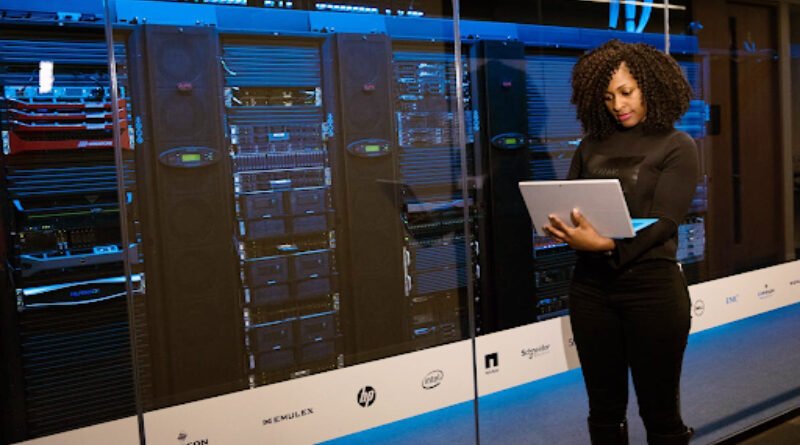How Smart Technology is Transforming Business Security and Operations
Researchers believe cybersecurity started in 1971 when a computer programmer designed and deployed a virus as a security test. Fast-forward five decades — cybersecurity is part of our everyday lives and constantly evolves.
In the age of smart technology, this industry has risen to another level, transforming how businesses safeguard their environments. Real-time threat detection, automated surveillance, and integrated security systems exist. These advancements also improve operational efficiency, allowing companies to optimize workflows, reduce risks, and streamline processes.
As with all cybersecurity, the strategies are about preventing threats through proactive approaches to risk management and addressing emergencies. AI-powered surveillance, cloud-based monitoring, and biometric authentication provide businesses with the tools to enhance security while maintaining efficient operations. The ability to monitor assets remotely, detect potential threats instantly, and integrate security measures into one system has changed how organizations approach their security strategies.
AI-Powered Surveillance: A Game Changer for Business Security
Artificial intelligence is revolutionizing surveillance by making security systems more responsive and accurate. These systems analyze real-time data and automate responses to potential security threats.
Here’s how that minimizes the chances of unauthorized access or breaches.
- Real-time threat detection: AI-powered cameras analyze video feeds instantly, identifying unusual behavior or unauthorized access. That reduces response times and enhances security effectiveness.
- Facial recognition technology: Businesses use facial recognition for access control, preventing unauthorized entry while streamlining team member and visitor management.
- Predictive analytics in security: AI analyzes patterns to anticipate threats before they materialize, helping businesses take preventive measures against potential risks. By leveraging machine learning, companies can create predictive models to enhance security protocols and reduce vulnerabilities.
Cloud-based strategies are another component of a comprehensive cybersecurity approach.
Cloud-Based Security: Enhancing Flexibility and Remote Monitoring
Cloud-based security makes monitoring more accessible and scalable. These systems allow businesses to oversee security in real-time, regardless of location, for continuous asset protection. This approach enables business owners and security teams to access surveillance footage and control security settings remotely. It is especially beneficial for organizations with multiple locations.
These solutions also eliminate the need for extensive on-site hardware, reducing costs and simplifying maintenance. The benefits are considerable. They allow real-time monitoring, enabling businesses to maintain security even when key personnel are off-site.
Security systems on the cloud also adapt to business growth, reducing the need for extensive hardware investments. They offer flexible solutions that adjust as a business expands or security needs evolve. One size does not fit all. It’s best to explore different surveillance solutions to find your organization’s best fit.
Exploring Innovative Surveillance Solutions
Advanced surveillance technology is no longer limited to large corporations — small and medium-sized enterprises also adopt innovative solutions that strengthen security and improve operational efficiency:
- Thermal imaging: You’ve likely been inside offices and stores that employ this. Examples include intelligent access control systems that regulate entry and automate administrative tasks; another example is AI-powered cameras that monitor warehouses and prevent theft.
- Heat mapping: This technology provides visual representations of how customers interact in retail stores. It’s a data-driven approach that enhances marketing strategies.
- Integrated surveillance: This boots security through license plate recognition, facial detection, and surveillance video analytics. Businesses using it benefit from improved operational efficiency and real-time alerts for possible security threats.
Emerging Security Trends in the Business World
For decades, movies and TV shows have featured biometric authentication and smart locks, but now, they’re used in real-world applications. Traditional keys are replaced with fingerprint and facial recognition technology for higher security levels. Drones are also being used for business surveillance, particularly in large facilities or during emergency response situations.
Businesses are increasingly investing in these emerging technologies to stay ahead of security risks. Implementing AI-driven analytics, automation, and connected devices also creates a more robust security infrastructure that adapts to new threats and challenges.
Cybersecurity and Physical Security: A Unified Approach
As businesses adopt digital security solutions, they must also prioritize physical security. A comprehensive strategy considers both types of threats to protect assets and data completely. What are the best ways to integrate internal and external risk security?
Cyber-physical threats arise when hackers exploit vulnerabilities in security systems, gaining access to surveillance cameras or smart locks. To prevent this, businesses can implement strong cybersecurity protocols, including firewalls, encryption, and multi-factor authentication.
Businesses should also plan for regular physical security assessments. Employee training on cybersecurity best practices helps prevent internal threats, like phishing attacks or weak password management. Also, only certain employees should have access to server rooms, so those doors should have passcodes. A unified approach strengthens overall security, reducing vulnerabilities that could compromise operations.
Smart Technology Shapes the Future of Business Security
These are the three main takeaways for business cybersecurity strategies:
- Business security and smart technology will remain connected for the foreseeable future.
- Companies that embrace that mindset stay ahead of emerging threats and improve efficiency.
- Security is no longer just about physical barriers but about integrating digital intelligence, automation, and proactive risk management.
There’s also this: Adopting smart security solutions provides peace of mind, allowing business owners and decision-makers to focus on growth and sustainability while maintaining a secure and resilient infrastructure.
Investing in security is not just about protection — it is a strategic decision that supports long-term business success. Implementing AI-powered surveillance, cloud-based monitoring, cybersecurity, and physical measures creates safer environments while improving operational efficiency.
Also visit Digital Global Times for more quality informative content.

